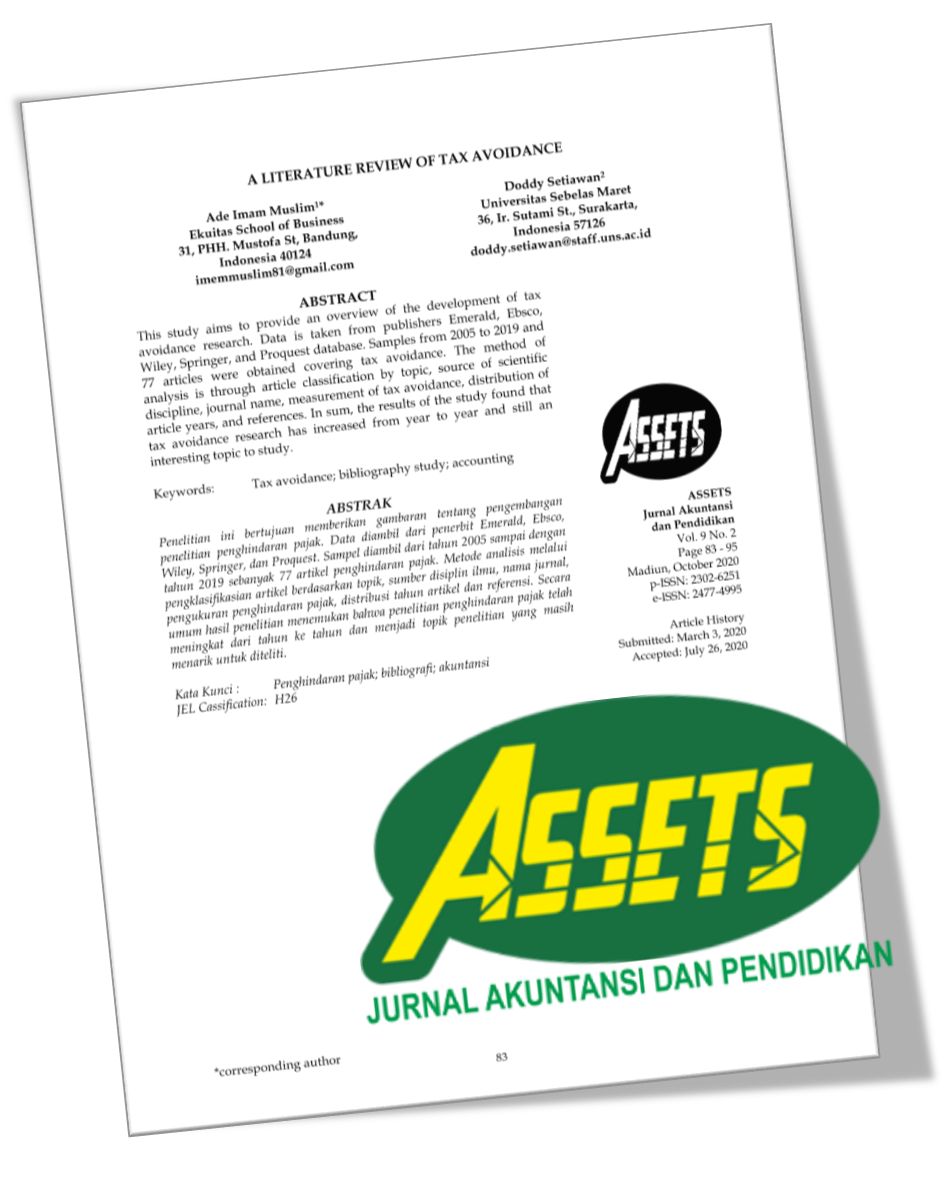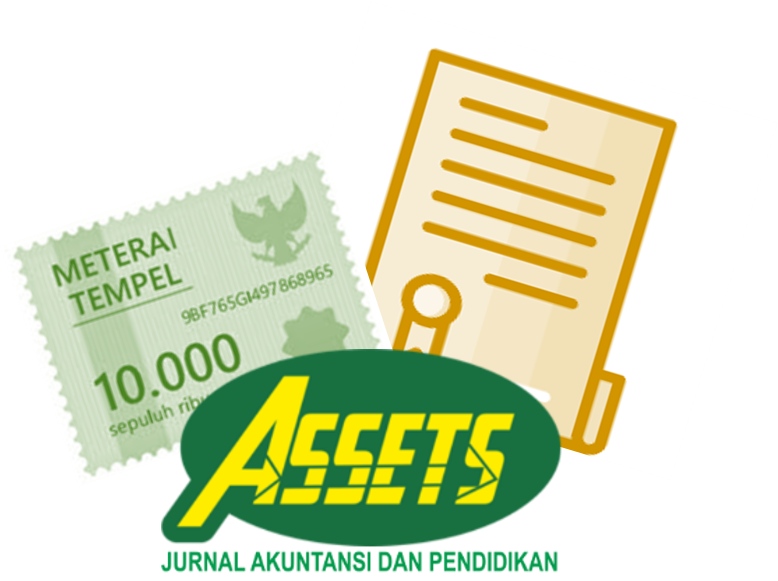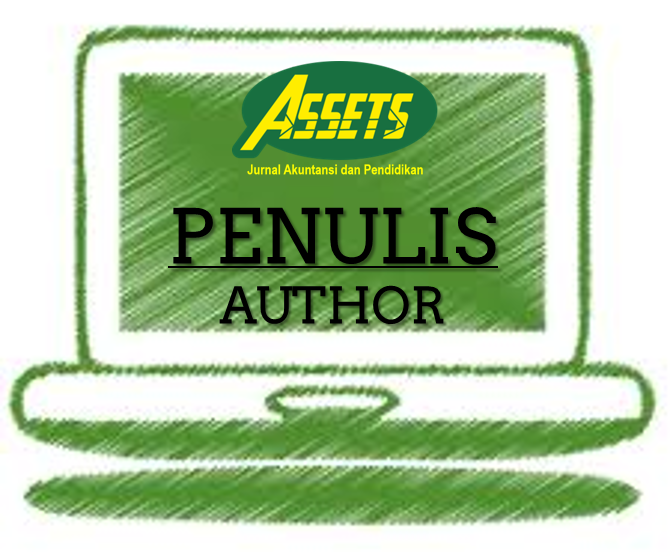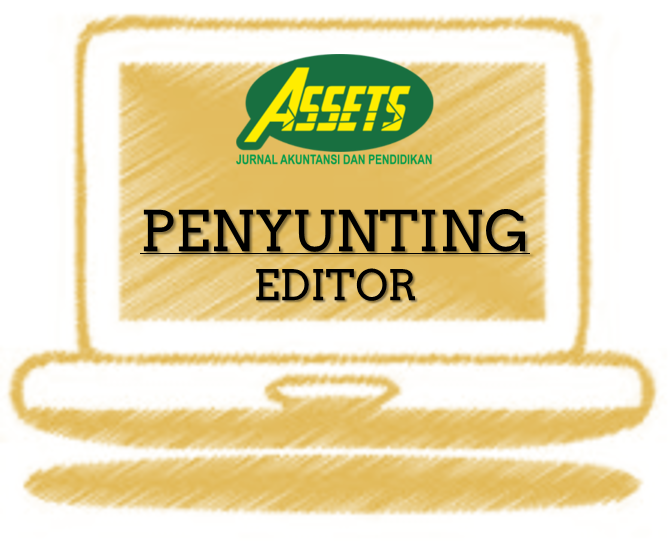Akuntansi Nilai Wajar: Perdebatan yang Tidak Berujung
DOI:
https://doi.org/10.25273/jap.v8i1.3486Keywords:
Akuntansi, nilai wajar, mendukung (pro), dan menentang (kontra),Abstract
Downloads
References
Agha, R. Z. (2013). Agha: Pengaruh Krisis Subprime Mortgage Terhadap Indikator Return Saham Industri. Jurnal TEKUN, IV(01), 143–157.
Allen, F., & Carletti, E. (2008). Mark-to-market accounting and liquidity pricing. Journal of Accounting and Economics, 45, 358–378. https://doi.org/10.1016/j.jacceco.2007.02.005
Amaefule, L. I., Okoye, E. I., Kalu, E. O., & Nwosu, S. U. (2018). Fair Value Measurement versus Historical Cost Accounting : A Comparative Effect on Firms ’ Performance in Nigeria, 9(10), 165–175.
Ball, R. (2006). International Financial Reporting Standards (IFRS): pros and cons for investors. Accounting and Business Research, 36, 5–27. https://doi.org/10.1080/00014788.2006.9730040
Barlev, B., & Haddad, J. R. (2003). Fair value accounting and the management of the firm. Critical Perspectives on Accounting, 14, 383–415. https://doi.org/10.1016/S1045-2354(02)00139-9
Barth, M. E. (2006). Including estimates of the future in today’s financial statements. Accounting Horizons, 20(3), 271–285. https://doi.org/10.2308/acch.2006.20.3.271
Barth, M. E., Beaver, W. H., & Landsman, W. R. (1996a). Value-relevance of banks’ fair value disclosures under SFAS No. 107. Accounting Review, 71(4), 513–537.
Barth, M. E., Beaver, W. H., & Landsman, W. R. (1996b). Value Relevance of Banks’ Value Disclosures SFAS No. 107 under Fair. Journal of Accounting, Auditing & Finance, 71(4), 513–537. https://doi.org/10.1177/0148558X0301800103
Barth, M. E., & Clinch, G. (1998). Revalued Financial, Tangible, and Intangible Assets: Associations with Share Prices and Non-Market-Based Value Estimates. Journal of Accounting Research, 36, 199–233.
Barth, M. E., Landsman, W. R., & Wahlen, J. M. (1995). Fair value accounting: Effects on banks’ earnings volatility, regulatory capital, and value of contractual cash flows. Journal of Banking and Finance, 19, 557–605. https://doi.org/10.1016/0378-4266(94)00141-O
Beaver, W. H., & Demski, J. S. (1979). The Nature of Income Measurement. The Accounting Review, 54(1), 38–46. https://doi.org/10.2307/246232
Benston, G. J. (2008). The shortcomings of fair-value accounting described in SFAS 157. Journal of Accounting and Public Policy, 27, 101–114. https://doi.org/10.1016/j.jaccpubpol.2008.01.001
Choy, A. K. (2006). Fair Value as a Relevant Metric: A Theoretical Investigation, 1–56.
Dewanti, D. K., & Kiswara. (2015). Studi Perbandingan Tingkat Kepatuhan Adopsi Intrnational Financial Reporting Standard ( IFRS ) di 12 Negara. Diponegoro Journal Of Accounting, 4(3), 1–14.
Dichev, I. D., & Tang, V. W. (2008). Matching and the changing properties of accounting earnings over the last 40 years. Accounting Review, 83(6), 1425–1460. https://doi.org/10.2308/accr.2008.83.6.1425
Evans, M. E., Hodder, L., & Hopkins, P. E. (2014). The predictive ability of fair values for future financial performance of commercial banks and the relation of predictive ability to banks’ share prices. Contemporary Accounting Research, 31(1), 13–44. https://doi.org/10.1111/1911-3846.12028
Fischer, D. T. (2011). IFRS 13 - Fair Value Measurement. Praxis Internationalen Rechnungslegung. https://doi.org/10.1289/image.ehp.v119.i03
Gaffikin, M. (2003). Accounting Theory: Research, Regulation and Accounting Practice. Accounting Forum.
IFRS.org. (2016). IFRS - Who uses IFRS Standards? IFRS Standard Filing Profile Project. Retrieved from https://www.ifrs.org/use-around-the-world/use-of-ifrs-standards-by-jurisdiction/
Irawati, Z., & Maya, A. (2008). Analisis Perataan Laba (Income Smoothing) : Faktor yang Mempengaruhinya dan Pengaruhnya Terhadap Return dan Risiko Saham Perusahaan Go Public di Bursa Efek Jakarta. BENEFIT: Jurnal Bisnis Dan Manajemen, 33–47.
Kallapur, S., & Kwan, S. Y. S. (2004). The Value Relevance and Reliability of Brand Assets Recognized by U.K. Firms. Accounting Review, 79(1), 151–172. https://doi.org/10.2308/accr.2004.79.1.151
Kartomo, R. (2008). Transformasi Penerapan Nilai Wajar (Fair Value) & Implikasinya.
Khomsantun, S. (2016). Jurnal riset akuntansi & keuangan. Jurnal Riset Akuntansi Keuangan, 4(2), 01-21. https://doi.org/10.17509/jrak.v4i3.4670
Krumwiede, T. (2008). Why Historical Costs Accounting Makes Sense. Strategic Finance, 33–39.
Landsman, W. R. (1986). An Empirical Investigation of Pension Fund Property Rights. The Accounting Review, 61(4), 662–691. https://doi.org/10.1016/j.ymeth.2009.04.009
Laux, C., & Leuz, C. (2009). The crisis of fair-value accounting: Making sense of the recent debate. Accounting, Organizations and Society, 34, 826–834. https://doi.org/10.1016/j.aos.2009.04.003
Lijing, & LI, B. (2010). The role of fair value accounting for investment in securities: Evidences from the Chinese banking industry. International Research Journal of Finance and Economics, (60), 86–93. https://doi.org/10.1109/ICMSS.2010.5576527
Lin, Y. C., & Peasnell, K. V. (2000). Fixed asset revaluation and equity depletion in the UK. Journal of Business Finance and Accounting, 27(3–4), 359–394. https://doi.org/10.1111/1468-5957.00317
Linsmeier, T. J. (2011). Financial reporting and financial crises: The case for measuring financial instruments at fair value in the financial statements. Accounting Horizons, 25(2), 409–417. https://doi.org/10.2308/acch-10024
Mahmudah, H. (2013). Trade Off Relevance dan Reliability: Isu IFRS. JRAK, 2(2), 84–89.
Meythi, & Teresa, S. (2012). Historical Cost dan General Price Level Accounting : Analisis Relevansi Indikator Keuangan. Jurnal Akuntansi, 4(2), 115–134.
Nissim, D. (2003). Reliability of banks’ fair value disclosure for loans. Review of Quantitative Finance and Accounting, 20, 355–384. https://doi.org/10.1023/A:1024072317201
Nugrahani, C. (2014). Fair value dan potensi fraud. Kiat BISNIS, 5(5), 325–333.
Park, M. S., Ro, B. T., & Park, T. (1999). Fair Value Disclosures for Investment Securities and Bank Equity: Evidence from SFAS No. 115. Journal of Accounting, Auditing & Finance. https://doi.org/10.1177/0148558X9901400311
Penman, S. H. (2007). Financial reporting quality: is fair value a plus or a minus? Accounting and Business Research, 33–44. https://doi.org/10.1080/00014788.2007.9730083
Roekhudin. (2018). Auditors Response towards Auditing of Fair Value. The Indonesian Journal Of Accounting Research, 21(1), 23–46.
Samuelson, P. A. (1965). Proof That Properly Anticipated Prices Fluctuate Randomly , Industrial Management Review. Industrial Management Review, 6(2), 41–49.
Samuelson, P. A. (2015). Proof that Properly Anticipated Prices Fluctuate Randomly. https://doi.org/10.1142/9789814566926_0002
Scott, I. E. (2010). Fair Value Accounting : Friend or Foe ? William & Mary Business Law Review, 1(2), 489–542.
Scott, W. R. (2015). Financial accounting theory. Prentice Hall Canada. https://doi.org/10.1016/j.jbiomech.2013.09.028
Shalev, R., Zhang, I. X., & Zhang, Y. (2013). CEO Compensation and Fair Value Accounting: Evidence from Purchase Price Allocation. Journal of Accounting Research. https://doi.org/10.1111/1475-679X.12015
Shanklin, S. B., Hunter, D. R., & Ehlen, C. R. (2011). A Retrospective View Of The IFRS ’ Conceptual Path And Treatment Of Fair. Journal of Business & Economics Research, 9(3), 23–28.
Siahaan, H. (2009). Implikasi dan Permasalahan dalam Mengimplementasikan Konsep Nilai Wajar Dalam Kondisi Ekonomi Saat. Retrieved from http://dfhpartners.id/id/2017/01/19/implikasi-dan-permasalahan-dalam-mengimplementasikan-konsep-nilai-wajar-dalam-kondisi-ekonomi-saat-i/
Simko, P. J. (1999). Financial Instrument Fair Values and Nonfinancial Firms. Journal of Accounting, Auditing & Finance, 247–274. https://doi.org/10.1177/0148558X9901400305
Sodan, S. (2015). The Impact of Fair Value Accounting on Earnings Quality in Eastern European Countries. Procedia Economics and Finance, 32, 1769–1786. https://doi.org/10.1016/s2212-5671(15)01481-1
Sonbay, Y. Y. (2010). Perbandingan biaya historis dan nilai wajar. Kajian Akuntansi, 2(1), 1–8.
Sonoto, J. F. (2010). Isu Global Konvergensi Ifrs : Masalahpengukunanmenggunakan, 2(2), 139–151.
Sukendar, H. (2012). Konsep Nilai Wajar (Fair Value) dalam Standar Akuntansi Berbasis IFRS di Indonesia Apa dan Bagaimana? Binus Business Review, 3(1), 93–106. https://doi.org/10.21512/bbr.v3i1.1286
Tendelilin, E. (2010). Portofolio dan Investasi Teori dan Aplikasi. Yogyakarta: Kanisius. https://doi.org/10.2753/MIS0742-1222260306
Zelmiyanti, R. (2014). Perkembangan Penerapan Prinsip Konservatisme dalam Akuntansi. JRAK, 5(1), 561–565.
Downloads
Published
Issue
Section
License
Perjanjian Lisensi dan Hak Cipta
Saat mengirimkan naskah ke jurnal, penulis menyatakan bahwa:
- Mereka diberi wewenang oleh rekan penulisnya untuk masuk ke dalam perjanjian ini.
- Karya yang dimaksud belum pernah diterbitkan secara resmi sebelumnya, kecuali dalam bentuk abstrak atau sebagai bagian dari kuliah, resensi, tesis, atau overlay jurnal yang diterbitkan.
- Karya yang dimaksud tidak sedang dipertimbangkan untuk diterbitkan di tempat lain,
- Publikasi karya yang dimaksud telah disetujui oleh semua penulis dan oleh otoritas yang bertanggung jawab - secara tahu sama tahu atau eksplisit - dari lembaga tempat pekerjaan itu dilakukan.
- Mereka mengamankan hak untuk mereproduksi materi apa pun yang telah diterbitkan atau dilindungi hak cipta di tempat lain.
- Mereka menyetujui lisensi dan perjanjian hak cipta berikut.
Hak Cipta
Penulis yang menerbitkan dengan ASSETS: Jurnal Akuntansi dan Pendidikan menyetujui persyaratan berikut:
- Penulis mempertahankan hak cipta dan memberikan jurnal hak publikasi pertama dengan karya yang secara bersamaan dilisensikan di bawah Lisensi Atribusi Creative Commons (CC BY-SA 4.0) yang memungkinkan orang lain untuk berbagi karya dengan pengakuan kepenulisan karya dan publikasi awal di jurnal ini.
- Penulis dapat masuk ke dalam pengaturan kontrak tambahan yang terpisah untuk distribusi non-eksklusif dari versi jurnal yang diterbitkan dari karya tersebut (misalnya, mempostingnya ke repositori institusional atau menerbitkannya dalam sebuah buku), dengan pengakuan publikasi awalnya di jurnal ini.
- Penulis diizinkan dan didorong untuk memposting karya mereka secara daring (misalnya di repositori institusional atau di situs web mereka) sebelum dan selama proses pengiriman, karena dapat menghasilkan pertukaran yang produktif, serta kutipan lebih awal dan lebih besar dari karya yang diterbitkan.
License and Copyright Agreement
In submitting the manuscript to the journal, the authors certify that:
- Their co-authors authorize them to enter into these arrangements.
- The work described has not been formally published before, except as an abstract or part of a published lecture, review, thesis, or overlay journal.
- That it is not under consideration for publication elsewhere,
- That its publication has been approved by all the author(s) and by the responsible authorities – tacitly or explicitly – of the institutes where the work has been carried out.
- They secure the right to reproduce any material already published or copyrighted elsewhere.
- They agree to the following license and copyright agreement.
Copyright
Authors who publish with ASSETS: Jurnal Akuntansi dan Pendidikan agree to the following terms:
- Authors retain copyright and grant the journal right of first publication with the work simultaneously licensed under a Creative Commons Attribution License (CC BY-SA 4.0) that allows others to share the work with an acknowledgment of the work's authorship and initial publication in this journal.
- Authors can enter into separate, additional contractual arrangements for the non-exclusive distribution of the journal's published version of the work (e.g., post it to an institutional repository or publish it in a book), with an acknowledgment of its initial publication in this journal.
- Authors are permitted and encouraged to post their work online (e.g., in institutional repositories or on their website) before and during submission, as it can lead to productive exchanges and earlier and more extraordinary citations of published work.

ASSETS: Jurnal Akuntansi dan Pendidikan is licensed under a Creative Commons Attribution-ShareAlike 4.0 International License.










